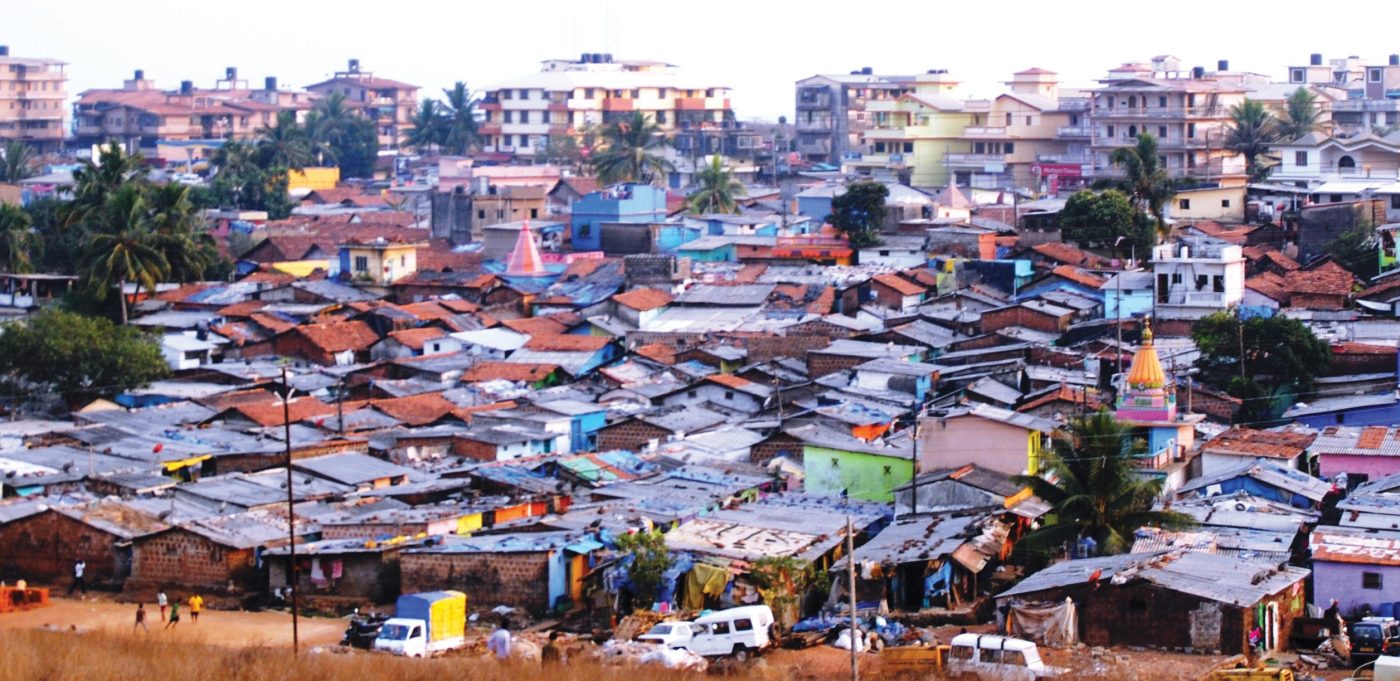SANGITA SHARMA
Slums all over the world mushroom in and around urban areas and have the dubious distinction of substandard housing and unhygienic conditions of living. They are steeped in poverty and squalor. Being informal settlements, they lack reliable sanitation services, clean water, electricity, law enforcement and other basic services. They stem out of rural-urban migration, urbanisation, unemployment and poverty. Informal economy creates complications. And to add to it are social conflicts and political apathy. Slums are vulnerable to natural and unnatural calamities and hazards. Violence, disease, malnutrition and epidemics become part and parcel of slum culture.
The optimists however believe that the challenges within the slum reinstate human resilience and adaptive skills of those inhabiting them. Slums are also considered potential areas of ‘man power’ resources, extremely essential for the development process in urban areas. If this is true, then the time has come to give this ‘man power’ it’s due in the economic growth and progress of the country by providing decent standard of living.
Goa too has its fair share of slums, mainly inhabited by the migratory labour community which is largely responsible for the infrastructure and economic development of the state. The largest slum in the state is that of Zuarinagar, home to around 18,000 people. It comes as an unpleasant surprise and is difficult to ignore as it is visible from the National Highway 17B which has the prestigious BITS Pilani on one side and the Zuari Agro Chemical Factory on the other. The shanties of the slum seem completely dwarfed as they lie in a trough, with the gigantic chemical factory looming over them, spouting hazardous chemical gases from its chimney towers. A closer look at the slum throws light on the harsh realities plaguing it. Illegal and unsafe construction, poor sanitary conditions, lack of schools & medical facilities, unplanned market areas, lack of toilets leading to open defecation etc. As one digs deeper into the problems, political and corporate apathy surfaces. In an age of SEZ’s, Swach Bharat Ahhiyan, PM Awas Yojna, AMRUT and development of Smart Cities, the slum seem surreal and are in an urgent need for a major change.
If long term solutions have to be found to make Zuarinagar slums decently habitable, then future plans have to be thought of more scientifically. Quick fix solutions to gain political mileage or please the industrial sector are going to lead to disastrous results in times to come.
Today one needs to question the relevance of agro-chemicals for agricultural solutions. Relying on them for high yields can be hazardous to biodiversity if used over a long period of time and indefinitely. After all, agro-chemicals are chemicals. The need of the hour is to phase out such industries and help evolve better organic solutions for farming. Organic solutions shall lead to sustainable development and a better planet for future generations. The concept of sustainable agriculture means to pass onto future generations conserved or improved natural resources and an evolving economic base rather than one which has been depleted or polluted.
Switching over to organic culture can be more conducive than conventional production systems and more sustainable in the long term. Organic methods of agriculture improve soil fertility and also drought resistance.
Organic farming relies on fertilizers of organic origin such as compost, manure, green manure and bone-meal fertilizer. Biological pest control, mixed cropping and fostering of insect predators are also encouraged. The application of organic principles enables employment of local resources (local seed varieties, manure etc) and therefore is cost effective. There is a growing demand for agri-products which makes it even more necessary to discourage use of chemicals in agriculture.
The other aspect of slum ie ‘health of people’ needs to be seriously looked into. By no stretch of imagination or rational thinking can it be assumed that people living in the vicinity of the factory are going to be healthy. The chemical gases will take a toll on their health. Government’s well intended rehabilitation programmes would prove to be failures if ‘health & hygiene’ of the people of Zuarinagar is not taken into consideration.
For a better tomorrow perhaps the Agro-Chemical Factory could be replaced by one which has organic solutions to agriculture. Besides, government’s rehabilitation programmes, desalination plants, rain water harvesting reservoirs, bio-gas plants, and solar power solutions are among a few changes in this area that can be made for a better environment and a progressive future.
The ambitious plans of the government to providew housing facilities to all by 2022 cannot be done without the involvement of the people of the area concerned. If slums have to be transformed then ‘self-help’ solutions have to be devised. The residents of the slums are responsible for the shanties they live in. With a little professional help of architects and engineers, they can be made to build better quality homes and housing communities, adhering to principles of sanitation and cleanliness. This would reduce the burden on the exchequer as well as the money the slum dwellers need to pay for ownership of their housing units. Self involvement would also mean to have a say in the design of the houses as per climatic conditions. Ownership rights trigger a sense of responsibility because of which the slum dwellers would be ready to invest their own resources for improving their own environment.
Community living is a very important aspect of life in the slums and should not be ignored. The need for health care centres, schools, playgrounds, parks, clean market spaces, centres of faith like temples, mosques and churches have to be given equal importance. By retaining the original way of living of the slum dwellers and improving upon it only, can it be ensured that there is a life beyond the slum



























